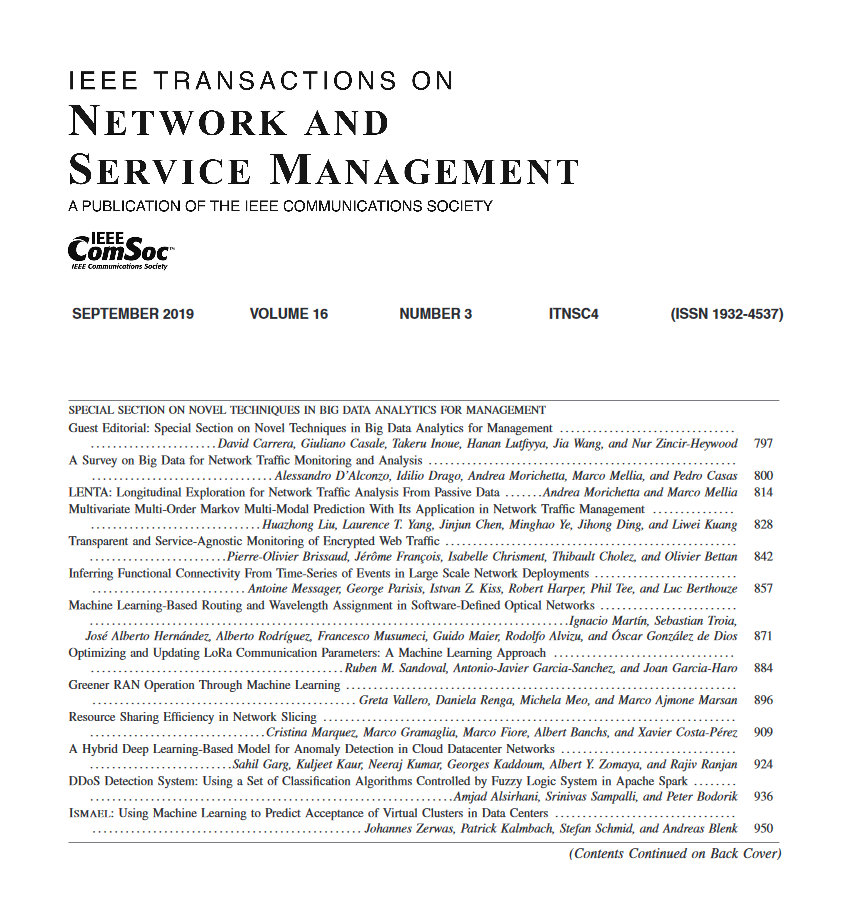An Adaptive Ensemble Learning Paradigm With Spatial-Temporal Feature Extraction for Wireless Traffic Prediction
IF 5.4
2区 计算机科学
Q1 COMPUTER SCIENCE, INFORMATION SYSTEMS
IEEE Transactions on Network and Service Management
Pub Date : 2024-12-23
DOI:10.1109/TNSM.2024.3522115
引用次数: 0
Abstract
Accurately predicting traffic in a cellular network is challenging since the traffic time series integrated by various wireless services is non-stationary and reveals concealed spatial correlation among different cells. Due to that, the presence of bias in a single forecast model often hinders the ability to generalise under numerous circumstances in wireless traffic data, no particular approach stands out as clearly superior to the others. In this paper, we propose an adaptive ensemble learning paradigm that can benefit from centralizing individual forecast base models. It stacks the prediction outputs of several base learners due to the traffic dynamics characteristic. An improved convolutional neural network (CNN)-based representation learning method is designed to extract the high-order spatial-temporal features in the traffic data and obtain the adaptive weights of participating base learner models for the ensemble. The experimental results verify that the proposed ensemble approach can fully utilize spatial-temporal features and outperform individual statistical and machine-learning models regarding prediction accuracy. Furthermore, the ensemble method via stacking base models with fewer parameters is capable of generating predictions close to the large-parametric spatial-temporal transformer (ST-Tran) model produced.基于时空特征提取的自适应集成学习模式在无线流量预测中的应用
由于蜂窝网络中各种无线业务集成的流量时间序列是非平稳的,并且揭示了不同蜂窝网络之间隐藏的空间相关性,因此对蜂窝网络中的流量进行准确预测具有挑战性。因此,单个预测模型中存在的偏差往往会阻碍在无线流量数据的众多情况下进行概括的能力,没有特定的方法明显优于其他方法。在本文中,我们提出了一种自适应集成学习范式,它可以从集中的单个预测基础模型中获益。由于交通的动态特性,它将多个基础学习器的预测输出叠加在一起。设计了一种改进的基于卷积神经网络(CNN)的表征学习方法,提取交通数据中的高阶时空特征,并获得参与基础学习模型的自适应权值。实验结果验证了所提出的集成方法可以充分利用时空特征,在预测精度方面优于单个统计模型和机器学习模型。此外,通过具有较少参数的叠加基模型的集成方法能够产生接近大参数时空变压器(ST-Tran)模型的预测结果。
本文章由计算机程序翻译,如有差异,请以英文原文为准。
求助全文
约1分钟内获得全文
求助全文
来源期刊

IEEE Transactions on Network and Service Management
Computer Science-Computer Networks and Communications
CiteScore
9.30
自引率
15.10%
发文量
325
期刊介绍:
IEEE Transactions on Network and Service Management will publish (online only) peerreviewed archival quality papers that advance the state-of-the-art and practical applications of network and service management. Theoretical research contributions (presenting new concepts and techniques) and applied contributions (reporting on experiences and experiments with actual systems) will be encouraged. These transactions will focus on the key technical issues related to: Management Models, Architectures and Frameworks; Service Provisioning, Reliability and Quality Assurance; Management Functions; Enabling Technologies; Information and Communication Models; Policies; Applications and Case Studies; Emerging Technologies and Standards.
 求助内容:
求助内容: 应助结果提醒方式:
应助结果提醒方式:


